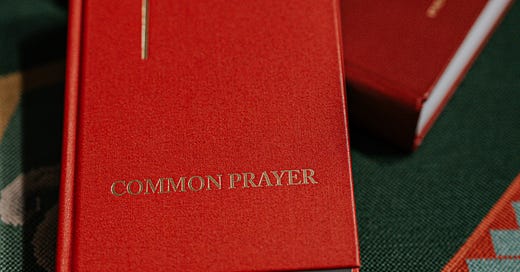Prayer Book Catholicism
This coming week St. John’s Church is host to a Nashotah House Seminar on Prayer Book Catholicism, co-taught by me, Fr Jameson, and Dr Drew Keane. Like the Elliott House clergy seminars we used to hold, this seminar responds to our mission to uphold the tradition of faith and worship of this particular parish – a tradition which could be described as Prayer Book Catholicism.
But what is “catholic” – and why does it matter? It’s not merely an institutional label, but a word adopted in the early church to express a Biblical truth, that the gospel is proclaimed to “all sorts and conditions of men”, without distinction. Literally translated, the word “catholic” means “according to the whole”, and thus the church is catholic because it is the whole body of believers who receive, hold, and hand on the whole truth of the gospel for the sake of the whole world. To belong to the catholic church is to live in communion with all who profess faith in Christ, in truth and charity (the gifts for which we pray at Holy Communion), and entails rejection of heresy (false teaching) and schism (division). In defence of catholic faith and unity the church was equipped with the catholic scriptures, catholic order (ministry), and the teaching of the catholic creeds, councils and fathers: the primary elements of the catholic tradition.
The 16th century reformers sought to restore the catholic church from later accretions that had obscured the gospel and which had become entrenched under papal rule. Some reformers though it best to break as fully as possible with papalism not only in doctrine but even in outward forms of ministry and worship; others (like Thomas Cranmer) thought it best to reclaim as much as possible of the inherited forms of ministry and worship for the protestant understanding of the gospel. Thus while the church of England had the same doctrine as other reformed churches, it retained the threefold ministry of bishop, priest, and deacon, and worshipped according to a liturgy that maintained a high degree of continuity with pre-Reformation forms, though simplified, purified, and translated into English. The church of England was not a new church, but the same catholic church reformed in line with the ancient doctrine of the church catholic.
This view was standard until the 19th century, when a new view emerged from a group called Tractarians (after the tracts which they published). Alarmed by a perceived threat to the catholic character of the Church of England, they found a remedy in a renewed regard for the Prayer Book liturgy (rather than the Articles of Religion), and in a recovery of at least some pre-Reformation piety and practices. Some of these “Anglo-Catholics” took the view that the problem lay in the English reformation itself, or at least its excesses; and in Tract 90 John Henry Newman made the audacious claim that the teaching of the (protestant) Articles of Religion could be reconciled with that of the (papalist) decrees of the Council of Trent! He ended up “swimming the Tiber” and accepting a cardinal’s hat; but most Anglo-Catholics took the view that Anglicanism was neither Protestant nor Papalist, but something in between, a “via media” or middle way that combined elements of both; and on that basis combined loyalty to the Prayer Book with an eclectic mix of pre-Reformation doctrine and ceremonial. This, historically, was “Prayer Book Catholicism”, and it shaped places like St. John’s.
At its best, Prayer Book Catholicism preserved the reformation Prayer Book embellished with elements of pre-Reformation vestment, ornament, and ceremonial, informed by respect for the catholic tradition in general. In the 1970’s, however, criticism of the old Prayer Book mounted, and it was eventually abolished (except in places like St. John’s). Along with a new liturgy came a new theology, ministry, and morality, which were neither catholic nor protestant (though still claiming to be a “via media” between them both). Moreover, from the 1980’s onwards, the historical basis of the “via media” came under serious criticism; and though it still has its defenders it is very much on the defensive. The critics argue – I think persuasively – that the “via media” view does not take full account of the protestant character of the English reformation – nor of the catholic character of protestantism! I believe this critique is to be welcomed, as a needed correction of the weakness that led to the institutional collapse. I do not think that this correction need require drastic changes in cherished outward forms, but rather a thorough rethinking of what they mean. The future for a renewed Prayer Book Catholicism is to be found in a deeper engagement with the Reformation heritage, one that is more humble, honest, and sympathetic.
GGD




